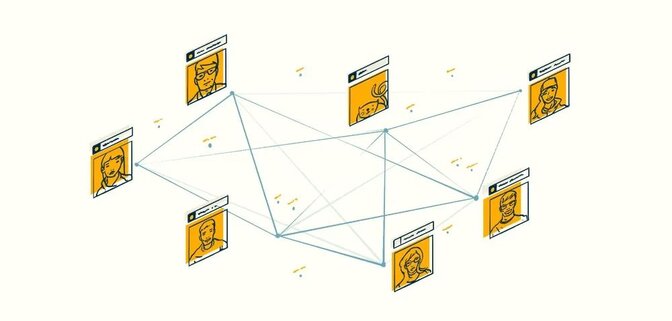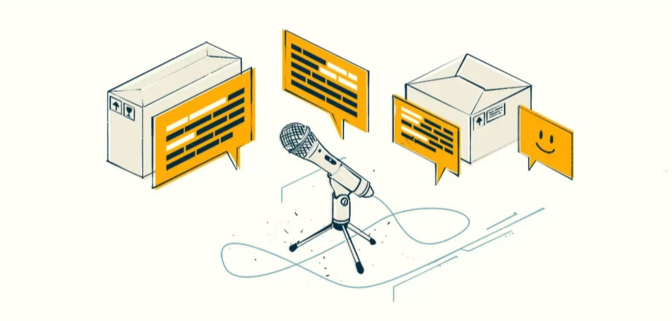- It’s the last chance to get the most benefit from mobile and PWA
- Time to stop thinking of the high street and e-commerce as separate entities
- Emerging technologies are set to further enhance customer experiences
2018 is in the bag. What a year! Almost everything from May onwards was driven towards the big release of Saleor 2.0
Now that is done, and Saleor is the officially the fastest-growing open source e-commerce platform in the world over the last 6 months, you’d think we would take some down time. But a new year means new opportunities and we are are fully focused on how we can roll with the big underlying e-commerce trends, as well as looking at emerging technologies which can enhance our business. Here is our take on what will shape e-commerce in 2019.
Mobiles and PWA
Mobile shopping took another great leap in 2018. Black Friday broke records in the USA to become the first ever $7 B day for e-commerce, of which $2 B was through mobile. It is not just a US trend, 90% of people in China used mobile for payments on Singles’ Day last year, while emerging markets like Africa are investing heavily in mobile as the most affordable and convenient way of doing business.
Essentially, if you are in e-commerce, mobile has grown to the point where it is now the last opportunity to really get on board. We will be helping companies with that shift.
PWA storefronts will also boom in the coming year. Retailers can offer stores to clients as native-like applications which can be browsed at any time, on- or off-line, giving shoppers a whole new level of retail experience and convenience. This was a key feature of the release of our Saleor 2.0 open source e-commerce solution.

People no longer want to wait for services; they expect everything to be tailored to an on-demand experience. As a retailer, you should use PWA to move away from simply offering products to customers and move closer to offering them experiences.
E-commerce can help the high street survive
Predictions suggest that over half of the 1,200 shopping malls in the US expect to close by 2023. The UK also had a rocky 2018 on the high street with household favourites like Toys R Us, HMV, House of Fraser and Maplins announcing big cuts or total closure.

E-commerce will not be a separate business arm of retailers in the future; the stores that thrive will be those with an omni-channel, fluid online and offline experience in which shopping trips may also be augmented by e-commerce technology.
Machine Learning and AI
Machine Learning and AI have been the big topics of 2018; skepticism has died down and people have come to accept the future of computing.
For Black Friday, we implemented our own ML engine for an online retail client who uses our Saleor e-commerce platform. The machine was an enhancement of an existing popularity-based recommendations engine; we added machine learning which analyzed each individual user’s purchase history against items which were frequently bought together, in order to make more targeted recommendations. This more personalized shopping experience achieved an $80,000 revenue increase over the course of 15 days (a spike of nearly 7%) and lifted the conversion rate by more than 1%. The fully automated process allowed the company to increase sales and profits — as well as moving near-obsolete stock — without any additional time spent by staff.

The key to good implementations of AI and ML still lies in human awareness and action. Make sure you know what to do 2 months, 2 weeks and 2 days before an event like Black Friday. 2019 is going to see a lot of businesses trying and failing with AI, because they failed to understand the real power of the technology and use it to its full potential.
Social commerce

E-commerce solutions are now starting to merge with major social media platforms, allowing customers to buy directly from their Facebook wall or an Instagram post, removing the additional clicks between interest and conversion. Perhaps surprisingly, Pinterest is the fastest growing social media platform and the one most suited to social commerce. In fact, 88% of people who save pins are doing so in search of a purchase.
Social commerce has existed for some time now, but it is beginning to truly move over to converting leads in real time, and is offering measurable analytics.
Voice commerce
Smart speakers are set to seriously disrupt e-commerce. We love the Google Home device in our office which we use to facilitate our scrum meetings, but we are certainly among the early adopters of an emerging technology that has far more capability than we can currently utilize. We can’t yet use our device to order in lunch in Poland, as they do in America, but change is coming.

Similar to social commerce and mobile purchases, voice commerce shows that 2019 is not just about the products people buy; we are on the cusp of a revolution in the way that people make purchases. Everything is moving towards multi-channel, multi-device experiences with less clicks, or no clicks at all, removing the obstacles between a lead and a sale.
Omnichannel
The final thing companies need to bear in mind is that there are so many incredible customer experiences already in the e-commerce space. If your store is not offering great customer service, easy contact with sales and support staff, rapid delivery, and no-questions-asked returns, you are probably already falling behind your competitors.